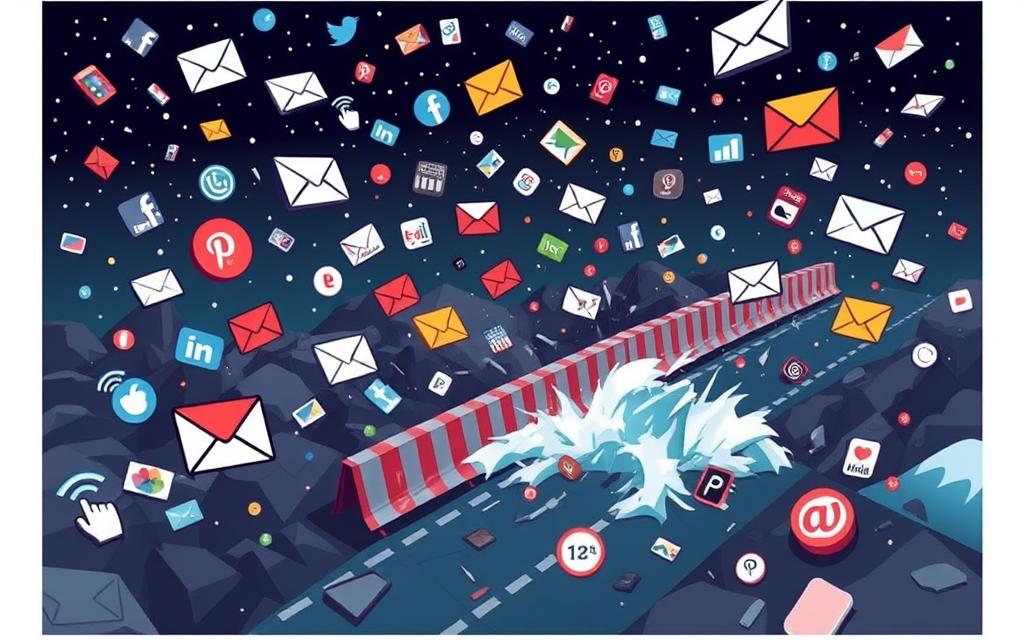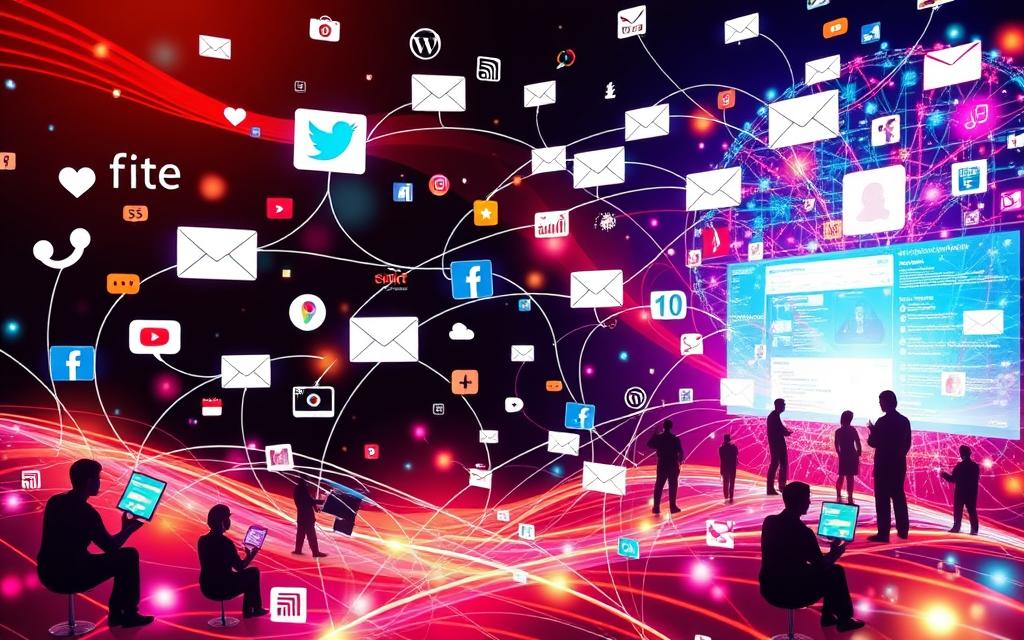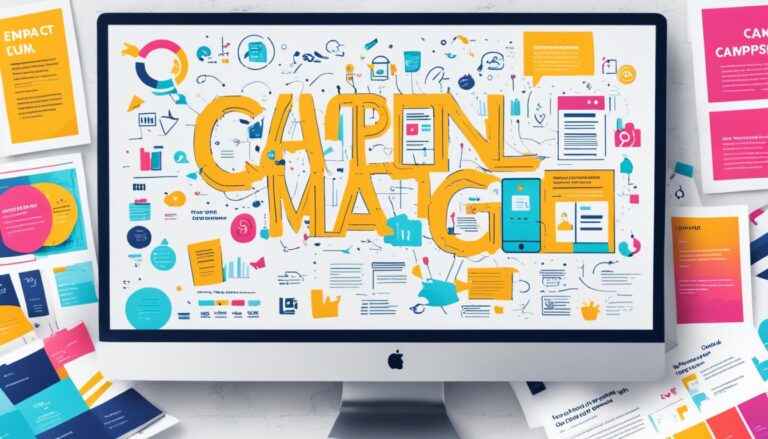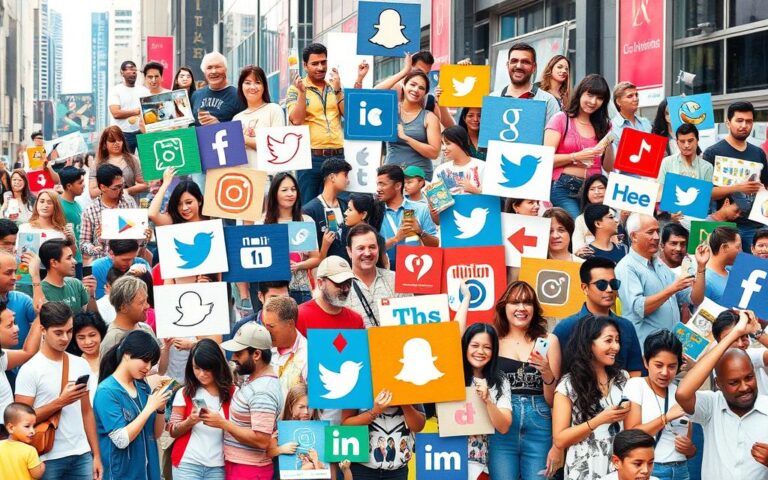Content Distribution Channels: Boost Your Reach
Did you know that effective content distribution can lead to a staggering 10,000 users per month from Google searches? This shows how important content distribution is for any successful content marketing strategy. Businesses need to create great content and share it across different channels to reach more people.
This article explores the world of content distribution channels. It shows the different ways brands can increase their presence and engage their audience. By knowing about owned, earned, and paid media, marketers can spread their messages and get more engagement.
Let’s dive into how to use these channels to boost your reach and improve your content marketing.
Key Takeaways
- Content distribution is key for better visibility and engagement in marketing.
- Using channels wisely can greatly increase web traffic and user interaction.
- Owned, earned, and paid media each offer unique benefits for sharing content.
- Good email marketing can lead to high delivery and engagement rates.
- Working with others can help you reach more people and get better results.
- It’s vital to measure content performance to improve your sharing strategies.
Understanding Content Distribution
Content distribution is key for brands to reach their audience on various platforms. As digital communication changes, using content distribution well is crucial. Brands use different Channels of Distribution, like owned, earned, and paid media. Each type has its own role, offering different levels of control and visibility.
Owned media, like websites and social media, lets brands control their message. It helps them build thought leadership and connect with their audience. Earned media, on the other hand, comes from third-party endorsements. These are trusted by over 88% of consumers, showing their power.
Paid media channels, through ads, offer quick visibility. With people seeing about 100 ads a day, it’s important to stand out. Digital marketers spend about 25% of their budget on creating quality content.
Timing and placement are key in content distribution. Good strategies make sure content reaches the right people at the right time. With so much online activity, like 241 million emails sent every minute, grabbing attention is tough. A balanced approach to Content Distribution is vital for effective content marketing.
Importance of a Content Distribution Strategy
In today’s world, new websites, blog posts, and YouTube videos are published every second. Having a solid Content Distribution Strategy is key. It helps brands reach their target audiences and boost Brand Visibility.
By organizing how content is shared, brands can make sure it connects with readers. This leads to more success in content marketing. It’s all about understanding what people want and how to share it best.
Brands need to know what their audience likes and use the right channels to share content. Looking at website traffic, social media engagement, and conversion rates helps see if efforts are working. Without a good plan, all the hard work in creating content might not be seen.
Using earned media channels can really help a brand’s reach. Videos and infographics grab social media users’ attention, making content more engaging. Offering rewards for sharing content can also increase organic reach, helping brands stand out.
Types of Content to Distribute
The success of content distribution depends on the types of content brands share. Knowing the differences between Owned, Earned, and Paid channels helps in using content formats wisely. Each type has its own benefits and goals, based on the marketing strategies.
Owned media channels let brands use their own platforms like blogs, eBooks, and social media. These are great for direct interaction with the audience. For instance, blogs attract organic traffic, and newsletters share updates and new products.
Earned media channels include guest posts, blog collaborations, and product reviews. They help build trust and authority. Being active in forums can also boost outreach and effectiveness. Metrics like user engagement show how important these are for visibility.
Paid media channels include ads and sponsored content. They help reach more people and engage a wider audience. Success is measured by impressions, clicks, and conversions.
With digital content use up 207% since the pandemic, good distribution strategies are crucial. Choosing the right content for each channel can improve online presence, drive traffic, and build stronger audience connections.
Content Distribution Channels Overview
Content distribution is key to spreading your brand’s message far and wide. Knowing about Content Distribution Channels Overview and Channel Types is crucial. These include owned, earned, and paid media, each with its own role in your Content Sharing Strategies.
Owned media includes websites, blogs, and email newsletters. Brands control the content and message here. For example, email marketing is very effective, bringing in $42 for every dollar spent.
Earned media means your content is shared by others, like influencers or guest posts. It boosts credibility and encourages people to engage naturally. Podcasts are a great example, with over 90% of listeners tuning in for most of the show.
Paid media, like social media ads and PPC campaigns, helps make your content more visible. It lets brands quickly reach specific groups of people. This makes it a valuable part of any content strategy.
Knowing about Channel Types helps you create better Content Sharing Strategies. Using a mix of channels can help your content reach more people. This leads to more engagement and helps generate leads online.

Owned Media Channels
Owned Media Channels let brands control their message and connect directly with their audience. These include company websites, blogs, and mobile apps. By creating consistent content, brands build strong relationships with their audience.
Email Marketing
Email Marketing is a key tool in owned media. It lets businesses send personalized messages to their subscribers. This builds trust and keeps the audience interested in what they have to say.
With a 42:1 return on investment, email marketing boosts engagement and drives sales.
Mobile and Desktop Apps
Mobile and desktop apps offer a unique way for businesses to share content. They send notifications about new content, promotions, or features. This keeps users engaged and strengthens the brand’s relationship with them.
Your Company Website
Your Company Website is the heart of your owned media. It has blog posts, case studies, and resource pages. This drives traffic and gives users a smooth experience.
A well-kept website also improves search engine rankings. This makes it easier for new customers to find you. Using your website well can make your other owned media channels more effective.
Earned Media Channels
Understanding Earned Media Channels can boost a brand’s visibility and trust. These channels use third-party endorsements to build trust. The main types are Guest Posting and Influencer Marketing, key in today’s digital world.
Guest Posting
Guest Posting helps brands grow online. By posting quality content on top blogs, they gain credibility and valuable backlinks. This boosts their SEO and attracts organic traffic.
Good content and strong SEO can increase shares and engagement. Brands should focus on guest posts in their niche for wider reach.
Influencer Collaborations
Influencer Marketing is a big deal in earned media. Working with influencers spreads a brand’s message to more people. Influencers have their followers’ trust, making their endorsements powerful.
Studies show 92% of people trust friends and family over ads. Influencer partnerships lead to higher engagement. By choosing the right influencers, brands can get more visibility and traffic.
To get the most from earned media, use strategies across all channels. For more on digital marketing media, check out this guide.
Paid Media Channels
Paid media channels are a strong tool for brands wanting quick and focused visibility. With the right investment, companies can use these channels well. This ensures their messages hit the right people.
Social media advertising is a key part of this. It lets businesses reach out to specific groups fast. This is especially true for platforms like Facebook, Instagram, and LinkedIn.
Social Media Advertising
Social media has changed how brands promote their content. Advertising on these platforms lets brands show content to users who match their target audience. This boosts traffic and engagement.
As social media grows, brands can reach more people. They can also keep in touch with potential customers. This is crucial for building strong relationships.
Using paid media wisely can bring big returns. Brands need to mix paid and organic methods for a solid strategy. A balanced approach helps achieve marketing goals better.
Knowing how to distribute content is key to getting noticed and engaging with people. Paid media offers a chance to build lasting connections. These connections can lead to more business in the future.
Content Distribution Challenges
Effective content distribution faces many obstacles. Brands struggle to pick the right channels from many options. This can lead to poor strategies and wasted resources.
For example, a video on Instagram Reels might get 300 views. But the same video could get 3,000 views on YouTube Shorts. This shows how choosing the right channel matters a lot.
Another challenge is making content fit different platforms while keeping a consistent brand message. Today, 71% of consumers want personalization from brands. It’s key to make content that fits what people like.
This personal touch can make customers more loyal. It’s all about understanding what your audience wants.
Creating engaging content is another big issue. While using many channels can help reach more people, it’s important to balance them. Using influencers and SEO can help reach more people and attract different audiences.
Paid ads on social media and Google can also boost your content’s performance. They can increase views, shares, and sales.
Doing audience surveys can give you insights to make better strategies. Focus on quality over quantity to build a loyal fan base. It’s all about being strategic and catching people’s attention.

Repurposing Content for Different Audiences
Repurposing content is a key strategy for brands to engage more people. By changing existing content into different formats, companies can reach more people. For example, turning a podcast into short social media clips or an article into an infographic can grab the attention of viewers who might not watch the original.
Keeping a company’s website fresh with new and repurposed content helps it rank better on search engines. Search engines like new information, making Content Optimization key for staying visible online. After investing in quality content, changing it into various formats helps save time and money.
Today’s tools, like Kaltura, make managing different content types easier. Businesses can create, store, and reuse content of any size, improving efficiency. By tailoring content to fit different audience preferences, brands can engage more people on different platforms without starting from scratch.
Repurposing content is more than just changing formats; it’s about using resources wisely to reach more people. This can mean turning blog posts into Instagram Stories or podcast episodes into newsletters. Knowing what your audience likes is key to success in this area.
Using a transmedia strategy can help engage audiences even more. As companies start repurposing content, they not only make their content last longer but also open up new ways to connect with their audience.
Measuring Success in Content Distribution
To check if content distribution works, brands need to look at measuring success closely. They should track things like unique visitors, how many people convert, and how long they stay on the page. This helps them understand how well their content is doing.
By watching page views and bounce rates, brands can see if they’re keeping their audience interested. Social media analytics also give valuable insights. They show how much people like, share, and comment on content. This helps brands see if their content is hitting the right notes with different groups.
Email marketing metrics like open rates and click-through rates are also key. They show how well content is being shared and read. Paid advertising ROI metrics help too, showing how money spent leads to revenue. By tracking these, brands can make their campaigns better.
Keeping an eye on these numbers helps brands make their strategies better. This leads to more people engaging with their content. It makes everything more effective.
Content Distribution Channels: Choosing the Right Ones
Choosing the right content distribution channels is key. You need to know your audience well and match your marketing goals. Look at different ways to share your content, like owned, earned, and paid channels. Pick the ones that best fit your goals and resources.
Email marketing is still a strong choice, with 4.6 billion people expected to use it by 2025. It lets you build strong relationships with your audience. Plus, you have full control over what you send out.
Social media is great for reaching lots of people. Sites like Facebook and Instagram have huge user bases. They give you insights into different groups, helping you target better. Adjust your content for each platform to get more engagement.
Influencer marketing can also boost your reach. The industry hit $16.4 billion by 2022. It’s a good way to connect with specific groups through real partnerships.
Choosing the right channels is all about using data. Look at how your audience has reacted to your content before. Use platforms like Quora or join communities to share your knowledge. This way, you can create strategies that really speak to your audience.
For more tips on effective content distribution strategies, refer to this resource.
Conclusion
In the world of digital marketing, knowing how to use content distribution channels is key. Brands need to boost visibility and connect with their audience. By using different channels well, they can get better results and more people talking about them.
Using social media, email, and working with influencers are smart moves. They help brands connect with people in real ways and reach more people. Keeping an eye on how well things are working and making changes helps keep content fresh and effective.
Being able to change and keep up with new trends is crucial. Brands that do this well stay ahead in a crowded online space. They make sure their content is seen and heard by the right people.
FAQ
What are content distribution channels?
Content distribution channels are where brands share their content. They include their own websites, email newsletters, and guest posts. Also, paid ads on social media are part of it.
Why is a content distribution strategy important?
A good strategy helps your content reach more people. It makes sure your message hits the right audience. This leads to more visibility, engagement, and loyalty.
What types of content can be distributed?
You can share many types of content. This includes blog posts, eBooks, infographics, and videos. Each type has its own purpose and should match your goals and audience.
What are owned media channels?
Owned media channels are under your brand’s control. They include your website, blog, and email marketing. They let you share content directly with your audience.
How can earned media channels enhance my content distribution?
Earned media uses third-party endorsements to spread your content. Guest posts and influencer collaborations boost your credibility. They help you reach new audiences.
What role do paid media channels play in content distribution?
Paid media channels give your content quick visibility through ads. They help you target specific groups. But, they require a budget for effective use.
What are the common challenges in content distribution?
Challenges include picking the right channels and adapting content. Keeping your message consistent is also hard. Knowing your audience and tracking engagement helps solve these problems.
How can I repurpose content for different audiences?
Repurposing means changing your content into different formats. For example, turning a blog post into an infographic or video. This way, you can reach more people and make the most of your content.
How can success in content distribution be measured?
Success can be measured by tracking KPIs like engagement and traffic. By analyzing these, you can improve your strategies. This ensures you’re effectively engaging with your audience.
How do I choose the right content distribution channels?
Choose channels based on your audience and marketing goals. Use data on audience engagement to guide your choices. This helps you reach potential customers effectively.







